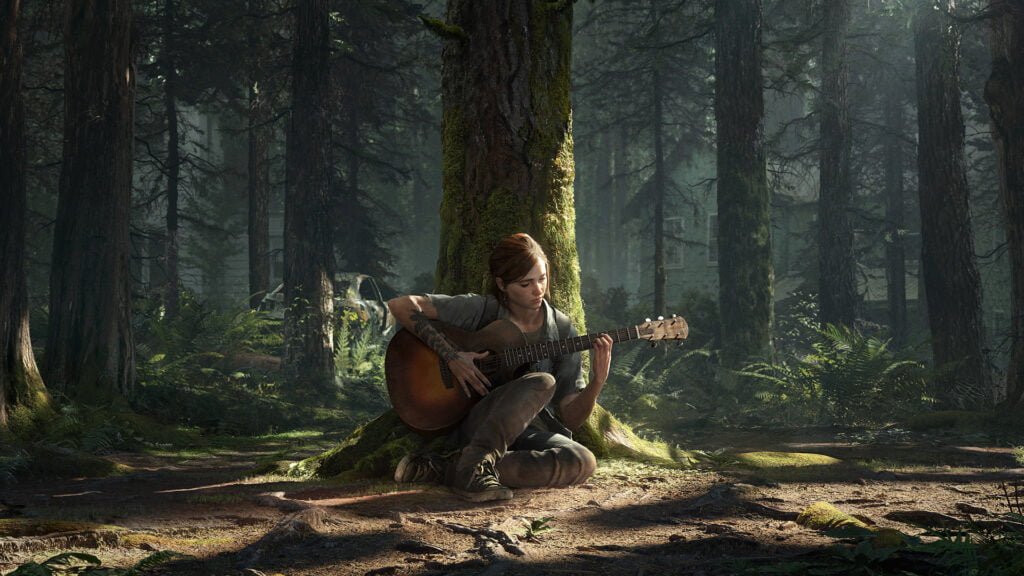This piece contains spoilers for The Last of Us Part I and The Last of Us Part II.
If I ever were to lose you, I’d surely lose myself.
Is it possible to have a new, refreshing take on this video game? Probably not. But I’m going to try anyway, because no matter if you loved it, hated it, or ended up in between, The Last of Us: Part II made you feel something—pissed off, exhausted, bewildered—the list goes on and on.
A Story Born in the Pandemic: The Last of Us Part II Release
The Last of Us: Part II dropped on June 19, 2020, in the thick of the pandemic, or as I like to call it, the plot twist of the century. I remember dropping everything to shove the disc into my PS4, escape the outside world for a few hours, and be fully immersed in a brand-new story. Who knew that about an hour in, we’d lose one of our main characters in a brutal murder, witness PTSD-level trauma, and not even know what we were stepping into for the next twenty to thirty hours of gameplay (more like thirty-five to forty if you’re like me and die almost every chapter).
Abby, a new character we’re introduced to early on and even play as for a moment, kills Joel. Brutally, like I said, with a golf club right in front of Ellie. We don’t know why. We’re lost and confused, hurt and broken.
Was Joel’s Death Inevitable in The Last of Us Part II?
But when you think about it, was Joel dying really a huge surprise? I think most of us saw it coming, at least eventually. It would be naive to think Joel would make it through the entire game without a scratch after all the pain he caused four years prior to the events in The Last of Us: Part II. Whether you agree with his decisions or not, Joel’s actions were going to have consequences—we just had no idea when or how they would manifest. To me, that wasn’t what instilled the most shock and awe while watching how it all unraveled. Here’s the major curveball: playing the second half of this gruesome game as his killer.
We find out later that Joel killed Abby’s dad, the doctor operating on Ellie at the end of the first game, whom you are also forced to kill. This is after you switch roles and play as Abby for the second half while trying to understand why you must keep this character alive and move along her story after she did such an uncalled-for act.
Is Abby’s Revenge Justified? Exploring Moral Ambiguity
But was it uncalled for? Maybe you’re angry because you’re forced to see a different perspective that challenges everything you know. It’s unexpected, not something you were emotionally prepared for, and that’s all right. I felt the same way before realizing the true power of The Last of Us: Part II—teaching yourself how to gain empathy and forgiveness for those who have wronged you.
A cycle of revenge. A true Greek tragedy. We care about Joel, but he’s not a “good” person. We don’t know anything about Abby besides the fact that she killed someone close to us, the audience, and someone close to Ellie, our “hero.” We’ve seen this story since the beginning of recorded time: Agamemnon was cursed for killing Iphigenia. The cycle of violence continues until the person you least expect to break it eventually does: Abby Anderson, probably the most hated character in video game history.
Abby’s Redemption Arc: A Moment of Peace
I’m not referencing Abby getting revenge on Joel for killing her dad at the end of Part I. It’s when there’s a moment of peace. Abby finally has a dream instead of a nightmare and sees her dad one last time after saving Seraphites Lev and Yara, just like Joel does with Ellie. Does this make her actions redeemable? No, but it shows us as the player that we can change and evolve too.
She’s deeply flawed, she’s grieving, and she’s angry. She’s pushing away the people who care about her, and she’s a killer who won’t stop at anything to get what she believes is justice. Now, am I talking about Abby or Ellie? Who knows. And that exactly proves my point.
Breaking the Cycle: Ellie’s Choice and Its Cost
This is how we progress through life: cycles of forgiveness, acceptance, and grief; if anything, Abby was the only character who truly found clarity in the end. Ellie could have chosen forgiveness and lived the rest of her life with a caring partner and child. She had a choice. She finally broke the cycle of violence, sparing Abby in that final fight, but at what cost once she returns home and sees Dina and JJ are gone?
Loss is not always wrapped up in a digestible bow for us to come to terms with. Most of the time, it makes no sense. That’s why the sudden loss of Joel as a character makes you feel so empty, it replicates real life and throws a curveball at us. To see people you brutally murdered as one character, then take care of you as another—that’s a gift to be able to have that experience, not a curse. You get to have perspective, and you choose how to deal with it, just like with grief.
Why The Last of Us Part II Feels So Human
This is not a perfect game. There are bad decisions, painful twists and turns, epiphanies that come too late, and revelations that feel just out of reach. If anything, The Last of Us: Part II is deeply flawed, just like we are. That’s what makes it real.
We can’t bring Joel back, or anyone we’ve lost for that matter. But we can try to heal ourselves from trauma, loss, and grief. We can endure and survive. We can look for the light.
